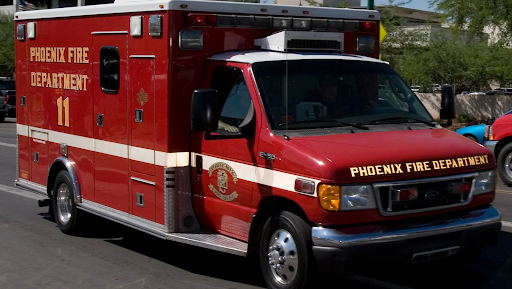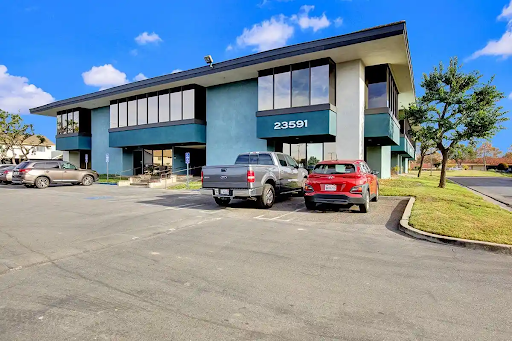Regaining Control After Addiction
Addiction is already expensive and complex on its own, but making the brave choice to move forward in sobriety can be even harder. There’s the cost of an inpatient treatment center or program, as well as looking for support, gaining the morale to live without drugs, and working through mental health problems and drug addiction.
Drugs have a way of shackling down a person before they even realize they’re chained down, and it can be much harder to break free from those shackles than to be tethered by them in the first place. Fentanyl addiction, in particular, is its own iron chain.
The thing about addiction that many people don’t understand is it’s next to impossible to cut those chains yourself. There’s nothing wrong with asking for help, and sometimes, someone has to hold the bolt cutters for you.
Fentanyl Abuse
Fentanyl addiction is extremely common: it is the fourth most common addiction in the United States, only beaten out by nicotine, alcohol, and marijuana. This is due to the fact that fentanyl is cheap, easy to obtain, and small doses create potent highs.Further, fentanyl addiction becomes more commonplace among recipients of surgery, as it is not uncommon for doctors to prescribe opiates and fentanyl as recovery drugs to aid with any severe pain following treatment.

How People Use Fentanyl Illegally
Illicit fentanyl is even more common than prescription fentanyl, being that the cost is low and can garner a large profit for drug dealers. Further, fentanyl is often mixed with other drugs, which is where the risk of fentanyl overdose comes in.
Being that fentanyl is such a powerful drug, a small dosage is all it takes to experience a high: doctors typically administer only 0.1 mg, and 2 mg is enough to be considered a lethal amount.
Buying fentanyl from dealers is extremely risky, being that it is often mixed with other drugs such as methamphetamine. If opioid drugs are taken with other drugs, the risk of overdose is extremely high, and because of this, fentanyl is the #1 cause of overdose deaths in the United States, and the numbers continue to climb yearly.
Preventing Severe Fentanyl Side Effects
Short-term effects of fentanyl create the feeling that addicts are often chasing, yet, continued use may have drastic effects over time.

Taking a dosage of fentanyl may manifest the following side effects:
- Drowsiness
- Confusion
- Nausea and/or vomiting
- Slowed breathing
- Small pupils
- Euphoric effects
While these seem relatively harmless, usage of fentanyl over time can cause permanent brain damage among other severe health issues, such as:
- Bowel obstruction
- Breathing problems during sleep
- Heart problems and potential heart failure
- Suppressed immune system
- Mood disorders, such as anxiety and/or depression
Warning Signs of Overdose
If a person has overdosed on fentanyl, it may appear as the following:
- Loss of consciousness
- Irregular breathing
- Blue, cold, or pale skin
- Choking
- Small pupils
If you believe someone, including yourself, may be at risk of a fentanyl overdose, it is important to call 911 immediately and keep the person conscious until medical professionals arrive at the scene. It’s also important to keep in mind that mixing fentanyl with other drugs or alcohol can put someone at an increased risk of overdose.
Fentanyl Addiction
There is a line between recreational usage and real drug abuse, and it can be determined with the following question:
Have you tried to quit taking fentanyl, but found yourself unable to due to severe pain and withdrawal symptoms? If the answer is yes, you may be dealing with a fentanyl addiction.
Other signs of fentanyl addiction may include:
- Using fentanyl in high-risk situations
- Taking fentanyl despite the fact it may make some of your physical or mental problems worse
- Experiencing cravings
- Fentanyl dependence
- Experiencing relationship problems, whether that’s with a partner or with family members

How Fentanyl Drug Rehab Programs Can Help
As you would seek out medical treatment when sick or injured, it’s just as important to seek medical care when recognizing the signs of fentanyl addiction. There are specialists all over the country that not only want to help but are trained to do so and know the best ways for their patients to break free from their drug addiction and maintain sobriety throughout the rest of their lives.
Fentanyl Withdrawal Symptoms
Withdrawal symptoms are one of the biggest battles to face on the road to sobriety, and however brief, can be extremely unpleasant for anyone experiencing them. Being that opioid addiction often is in an attempt to treat severe pain, it can resurface that pain, making withdrawal symptoms feel worse than the addiction itself.
While painful withdrawal symptoms are part of the package, withdrawal can actually be incredibly dangerous if done at home without medical supervision. Some of these symptoms of detoxing from fentanyl addiction include:

- Fever
- Anxiety
- Nausea/vomiting
- Muscle/joint aches
- Chills
- Cramps
- Irritability
- Dizziness
- Trouble sleeping
Residential Inpatient Care at Zoe Recovery
Based in southern California and located throughout the state, Zoe Behavioral Health are rehab centers aimed at helping people recover from addiction, help them move forward in their lives, and build healthy habits.
Further, they offer a fentanyl addiction treatment program aimed specifically at people struggling with fentanyl addiction and have specialized care and an individualized treatment plan for each patient.
There are two different options for fentanyl addiction treatment, and both vary depending on the patient’s needs and treatments: either inpatient or outpatient addiction treatment.
Outpatient vs. Inpatient Programs
The core difference to keep in mind when deciding between outpatient and inpatient care is that outpatient care allows you to stay at home with occasional visits to the rehab centers, but inpatient care requires an extended stay at an addiction treatment center that can last up to three months.
The benefits of outpatient care allow you to stay in your own home for the duration of the recovery process, and that way, you get the comfort home provides, such as partners, family members, or pets. You would only visit the rehab center when attending group therapy and individual therapy sessions. However, this method of fentanyl addiction treatment has the drawback of an increased risk of relapse due to lack of supervision, and less intensive care and support. The isolation can create problems with mental illness and physical symptoms, as well.

When exploring treatment options and deciding between inpatient and outpatient care, it’s important to ask yourself these questions:
- What do I need to become sober?
- What do I need to maintain that sobriety?
- What will be better for me in the long term, and not just the short term?
Zoe Behavioral Health can help you answer these questions if it becomes too difficult and emphasizes that patients should reach out if they feel stuck in the decision-making process. They’re trying to help, and they can help you decide what fentanyl addiction treatment is best for you.
Support and Community

While individual therapy is just as important, group therapy can allow others to find like-minded people, which can aid exponentially in the recovery journey.
Other Resources
If Zoe Recovery isn’t nearby and you’re looking for a rehab center in your area for fentanyl addiction treatment, there is a search engine that allows you to search nationwide, and can filter results based on what specific fentanyl addiction treatment options you’re seeking and what insurance you have:
https://www.addictioncenter.com/rehabs/
Further, the United States Drug Enforcement Administration’s (DEA) website offers dozens of resources on how to seek out help, how to maintain sobriety, how to build a better lifestyle, as well as prevention:
